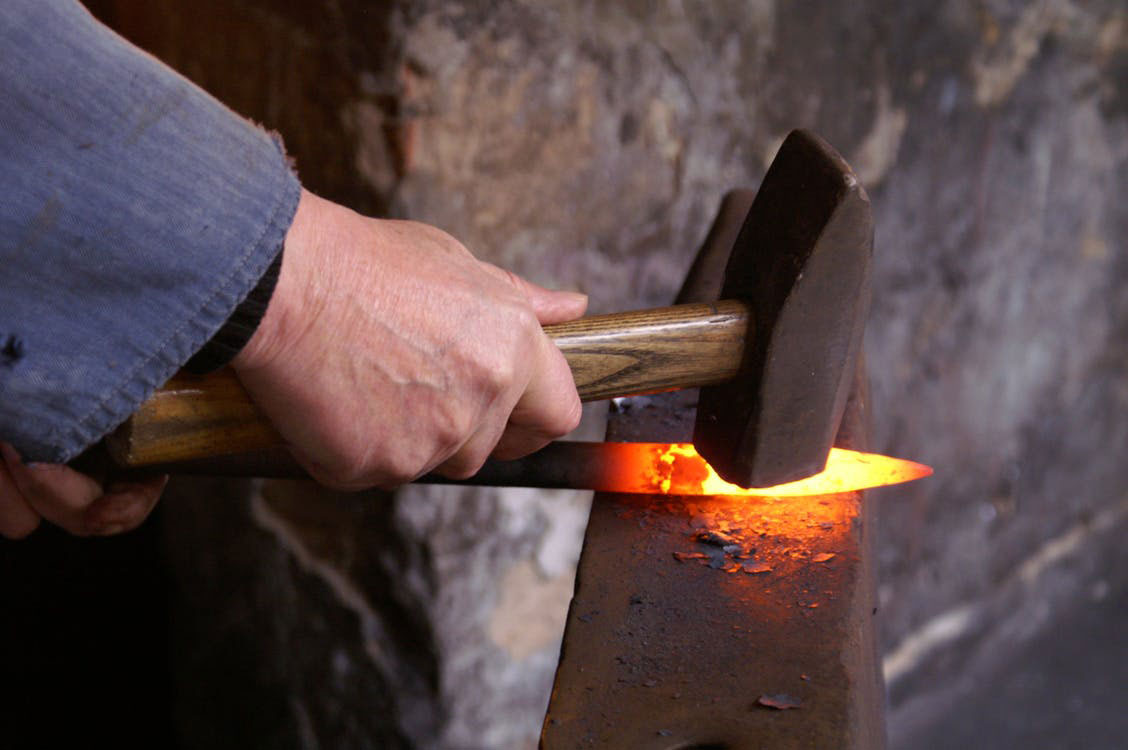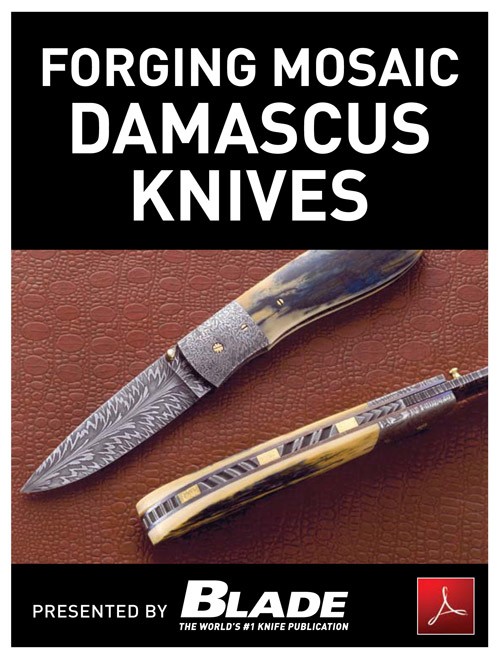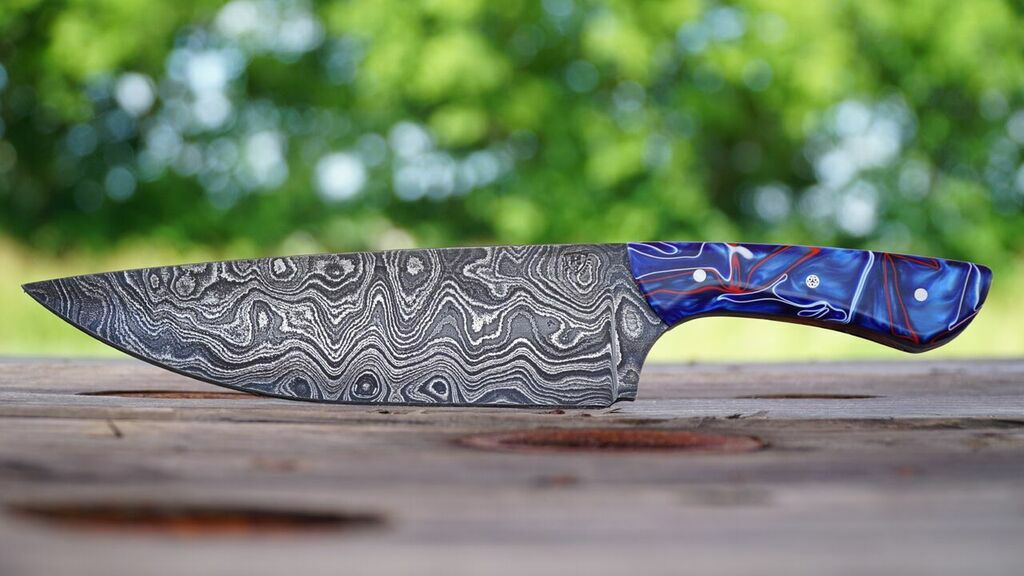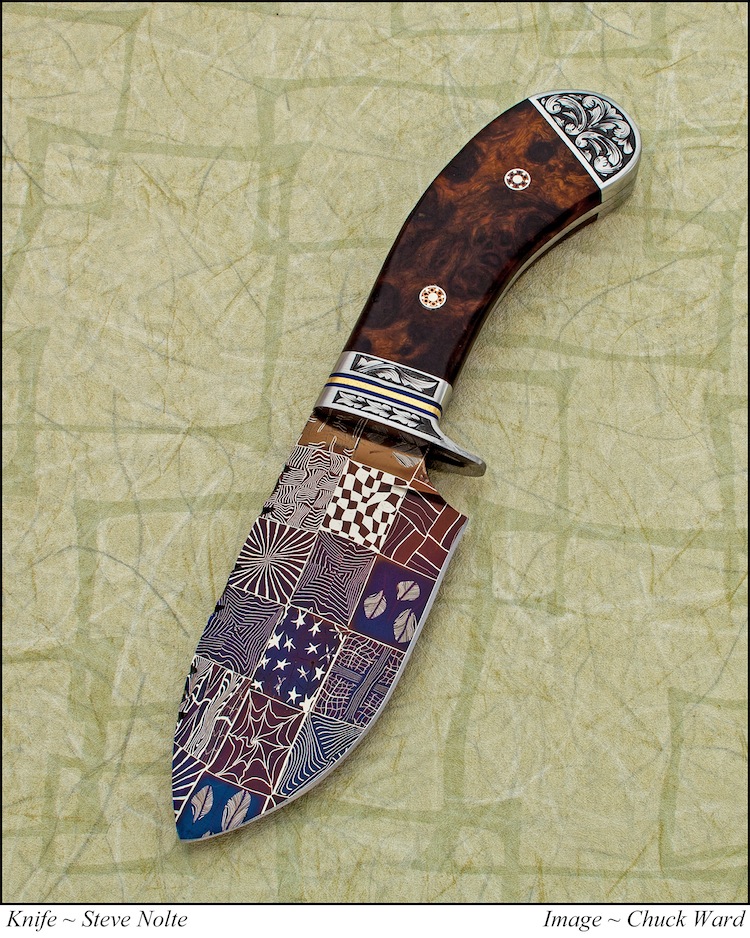
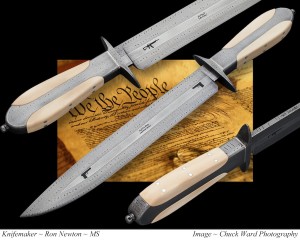
Damascus steel has fascinated blade enthusiasts since 11th-century Crusaders first brought tales of it home from the Crusades—and the steel lives in style today on many of the custom knife industry’s leading blades.
One of the things that makes damascus so appealing is the almost infinite number of patterns in which it is forged. From its modern introduction on the American knife scene by BLADE Magazine Cutlery Hall-Of-Fame© member Bill Moran at The Knifemakers’ Guild Show in 1973 to today’s array of assorted patterns, mosaics, stainless versions and more, the steel is almost always a visual feast.
Moran named the ladder-pattern damascus, seen herein on the sub-hilt piece by Bill Behnke, after the Biblical Jacob’s Ladder. Note the “rungs” that run vertically on the blade from guard to tip, constituting the “ladder.” Steve Nolte’s wide skinner herein showcases the steel known as mosaic damascus, or also “canned steel.” There are any number of versions of it, and they are most all breathtaking.
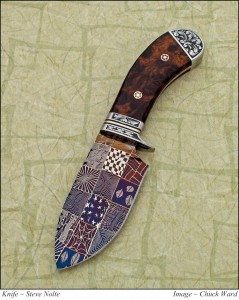
Ron Newton’s “Newt’s Wootz” on his bowie herein is another of the maker’s astounding damascus steels. The damascus blade has a “Newt’s Wootz” core with 9mm handguns and AR-15 rifles plugged into the core and surrounded by tight Turkish twist bars of 1095 and 15N20 carbon steels. The two phrases in the core read “Right to keep and bear arms” and “Just try to take them.” The guard and finial knob are of a single twist damascus. The handle is six-bar Turkish twist damascus.
For the latest knives, knife news, trends, tips and more, stay tuned to www.blademag.com.
 NEXT STEP: Download Your Free KNIFE GUIDE Issue of BLADE Magazine
NEXT STEP: Download Your Free KNIFE GUIDE Issue of BLADE Magazine
BLADE’s annual Knife Guide Issue features the newest knives and sharpeners, plus knife and axe reviews, knife sheaths, kit knives and a Knife Industry Directory.Get your FREE digital PDF instant download of the annual Knife Guide. No, really! We will email it to you right now when you subscribe to the BLADE email newsletter.


